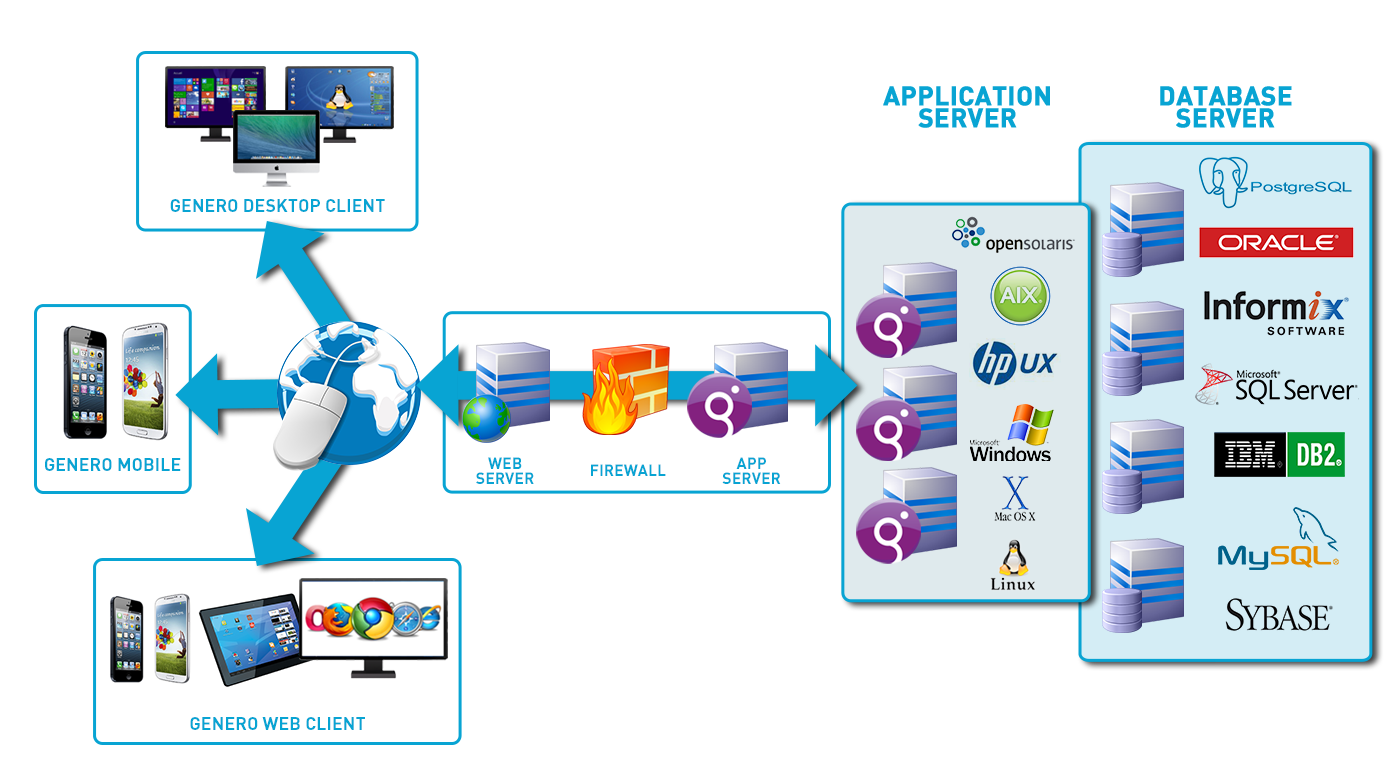No-Code Open System Database Creation: Encouraging Services to Develop Faster
No-Code Open System Database Creation: Encouraging Services to Develop Faster
Blog Article
A Comprehensive Guide to Executing Scalable Databases Without the Requirement for Coding Experience
In the contemporary landscape of data monitoring, the ability to implement scalable data sources without coding experience is coming to be increasingly crucial for companies of all dimensions. This guide intends to brighten the process, concentrating on easy to use devices and instinctive user interfaces that demystify data source configuration. By analyzing crucial features, effective approaches for implementation, and finest techniques for ongoing management, we will address just how also non-technical users can confidently browse this complex terrain. What are the essential components that can truly equip these users to leverage scalable data sources efficiently? The responses may redefine your technique to data monitoring.
Comprehending Scalable Databases
In the realm of modern information monitoring, scalable data sources have arised as an essential option for companies seeking to manage enhancing volumes of details efficiently. These data sources are designed to suit growth by allowing for the smooth enhancement of sources, whether through straight scaling (including much more devices) or vertical scaling (upgrading existing machines) This adaptability is essential in today's hectic digital landscape, where information is generated at an unprecedented price.
Scalable databases normally make use of distributed designs, which enable information to be spread throughout numerous nodes. This distribution not only enhances efficiency yet also provides redundancy, making sure data availability also in the event of equipment failings. Scalability can be a vital variable for different applications, including e-commerce platforms, social networks networks, and huge data analytics, where customer demand can fluctuate dramatically.
In addition, scalable data sources commonly feature durable data consistency designs that stabilize performance and dependability. Organizations has to consider their certain requirements, such as read and create rates, information honesty, and mistake resistance when selecting a scalable database service. Ultimately, recognizing the underlying concepts of scalable databases is vital for organizations intending to prosper in an increasingly data-driven world.
Secret Features to Seek
When reviewing scalable databases, several essential attributes are extremely important to making sure optimal efficiency and reliability. Firstly, consider the architecture of the data source. A dispersed architecture can improve scalability by permitting information to be saved across numerous nodes, assisting in seamless information access and handling as need rises.
An additional essential feature is data dividing, which allows reliable administration of large datasets by dividing them into smaller sized, extra convenient pieces (no-code). This technique not just enhances efficiency but likewise simplifies source allocation
Additionally, search for durable replication capabilities. This feature guarantees data redundancy and high schedule, minimizing downtime throughout maintenance or unforeseen failings.
Efficiency tracking tools are likewise crucial, as they provide real-time insights right into system wellness and functional effectiveness, enabling for timely modifications to keep ideal efficiency.

User-Friendly Database Tools
Simpleness is a crucial aspect in the style of straightforward database devices, as it boosts availability for users with differing levels of technological knowledge. no-code. These devices prioritize instinctive interfaces, making it possible for customers to develop, manage, and question databases without requiring considerable shows knowledge
Trick functions typically consist of drag-and-drop functionality, visual information modeling, and pre-built themes that enhance the configuration procedure. Such devices commonly use directed tutorials or onboarding procedures that facilitate customer involvement and minimize the you could look here discovering contour. Additionally, smooth assimilation with preferred data sources and solutions makes sure that individuals can quickly import and export data, even more simplifying procedures.

In addition, robust assistance and area resources, such as forums and paperwork, improve the customer experience by providing help when required. In general, easy to use data source devices encourage companies to harness the power of scalable data sources, making data administration easily accessible to everyone involved.
Step-by-Step Execution Overview
How can organizations successfully carry out scalable databases to satisfy their growing data demands? The process starts with determining details data demands, including the volume, variety, and rate of information that will be refined. Next, companies must review straightforward database tools that use scalability attributes, such as cloud-based solutions or handled data source solutions.
Once the appropriate device is chosen, the following action includes configuring the data source environment. This consists of establishing circumstances, defining user approvals, and establishing data frameworks that straighten with company goals. Organizations must after that move existing information right into the new system, ensuring information stability and minimal disruption to procedures.
Post-migration, carrying out extensive screening is essential; this consists of performance screening under numerous lots conditions to make sure the system can handle future growth - no-code. In addition, it is very important to educate staff on the data source management user interface to assist in smooth use
Finest Practices for Management
Effective monitoring of scalable data sources requires a tactical strategy that focuses on continuous monitoring and optimization. To attain this, companies should implement durable surveillance devices that provide real-time understandings right into data source efficiency metrics, such as question reaction times, resource usage, and purchase throughput. Frequently evaluating these metrics can aid determine bottlenecks and locations for improvement.

Normal back-ups and catastrophe recuperation strategies are important to protect information honesty and schedule. Developing a regular for testing these back-ups will certainly guarantee a dependable recuperation process in case of an unexpected failure.
Additionally, efficiency adjusting ought to be a continuous procedure. Changing indexing strategies, optimizing questions, and scaling resourcesâEUR" whether up and down or horizontallyâEUR" will aid preserve hop over to these guys optimal performance as usage needs advance.
Lastly, promoting a culture of knowledge sharing among group members will enable constant understanding and adaptation, ensuring that the administration of scalable databases continues to be effective and reliable over time.
Final Thought
To conclude, the implementation of scalable databases can be efficiently achieved without coding know-how through the usage of user-friendly devices and user-friendly interfaces. By sticking to the detailed methods for arrangement, information movement, and performance testing, individuals can browse the intricacies of data source monitoring with simplicity. Stressing best methods for recurring upkeep and cooperation further improves the capability to handle scalable data sources effectively in a swiftly evolving data-driven environment.
In the contemporary landscape of data monitoring, the ability to carry out scalable data sources without coding knowledge is coming to be progressively important for companies of all sizes.In the realm of modern information monitoring, scalable databases have emerged as a vital remedy for organizations looking for to take care of raising volumes of info efficiently.Moreover, scalable data sources typically feature robust data consistency models that stabilize efficiency and integrity.Exactly how can companies successfully carry out scalable databases to satisfy their expanding data needs? Next off, companies should assess user-friendly database devices that use scalability functions, such as cloud-based solutions or took care of data source services.
Report this page